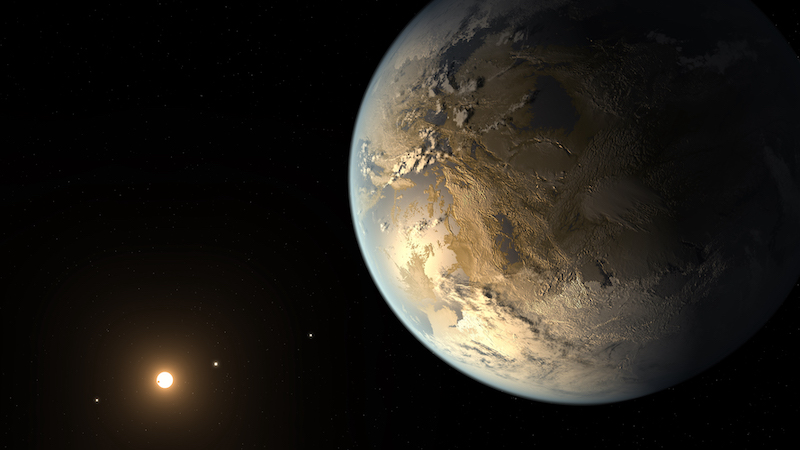
Planning for the Habitable Worlds Observatory
Will a proposed mission, called the Habitable Worlds Observatory, be the first to detect life beyond Earth? In August, scientists and engineers gathered at Caltech to discuss the future mission, which would launch in the late 2030s or early 2040s. The National Academy of Sciences’ Decadal Survey on Astronomy and Astrophysics – a roadmap of upcoming astronomy goals – picked the Habitable Worlds Observatory as their top priority in 2020. The observatory would be second in power only to the James Webb Space Telescope.
One of the goals of the Habitable Worlds Observatory would be to help astronomers study exoplanets in the habitable zone, the region around a star where temperatures are suitable for liquid water. Key to finding life on other worlds would be the observatory’s ability to examine the atmospheres of exoplanets. The observatory would mask the light of the parent star with a coronagraph, or starshade, to get a better look at an exoplanet’s atmosphere. Then astronomers would be able to detect the chemicals in the atmosphere that might indicate the presence of life. These indicators are called biosignatures. As Nick Siegler of JPL said:
We estimate there are as many as several billion Earth-size planets in the habitable zone in our galaxy alone. We want to probe the atmospheres of these exoplanets to look for oxygen, methane, water vapor, and other chemicals that could signal the presence of life. We aren’t going to see little green men but rather spectral signatures of these key chemicals, or what we call biosignatures.
The coronagraph is key
The Habitable Worlds Observatory’s design will depend upon a coronagraph. The design follows recent investments that will be used in the Nancy Grace Roman Space Telescope, set to launch by May 2027.
A recent version of the coronagraph – called the vortex coronagraph – is in the Keck Planet Imager and Characterizer, part of the Keck Observatory in Hawaii. The vortex coronagraph lets scientists directly image the thermal emissions from young, warm gas-giant exoplanets. The planets are about a million times fainter than their stars.
But scientists would like to get a better look at smaller, Earth-sized planets in the habitable zone. However, these smaller planets are vastly outshone by their parent stars. Earth, for example, is 10 billion times fainter than the sun. So a coronagraph built to spot an exoplanet like Earth would be “exponentially harder”.
At the meeting at Caltech in August, participants discussed a coronagraph with a deformable mirror. One of the problems with a typical coronagraph is that stray light still leaks onto the image as speckles. A deformable mirror could help to cancel out the stray starlight. See the video below for how a coronagraph with a deformable mirror works.
Nancy Grace Roman Space Telescope’s coronagraph
The Nancy Grace Roman Space Telescope will be the first to employ this type of coronagraph. Such a coronagraph should enable images of exoplanets up to a billion times fainter than their stars. The Roman space telescope should be able to image both mature and young gas-giant planets along with disks of debris left over from planet formation. As Vanessa Bailey of JPL said:
The Roman Coronagraph Instrument is NASA’s next step along the path to finding life outside our solar system. The performance gap between today’s telescopes and the Habitable Worlds Observatory is too large to bridge all at once. The purpose of the Roman Coronagraph Instrument is to be that intermediate stepping stone. It will demonstrate several of the necessary technologies, including coronagraph masks and deformable mirrors, at levels of performance never before achieved outside the lab.
The Habitable Worlds Observatory’s coronagraph will need to perform even better. Dimitri Mawet of JPL said:
We need to be able to deform the mirrors to a picometer-level of precision [one trillionth of a meter]. We will need to suppress the starlight by another factor of roughly 100 compared to Roman’s coronagraph. The workshop helped guide us in figuring out where the gaps are in our technology, and where we need to do more development in the coming decade.
With about a decade to go before launch, the Habitable Worlds Observatory has a long road ahead. JPL director Laurie Leshin said:
It’s an exciting and daunting challenge. But that’s what we all live for. We don’t do it alone. We do it in collaboration.
Bottom line: NASA’s future Habitable Worlds Observatory will analyze the atmospheres of exoplanets, looking for signatures of alien life.











